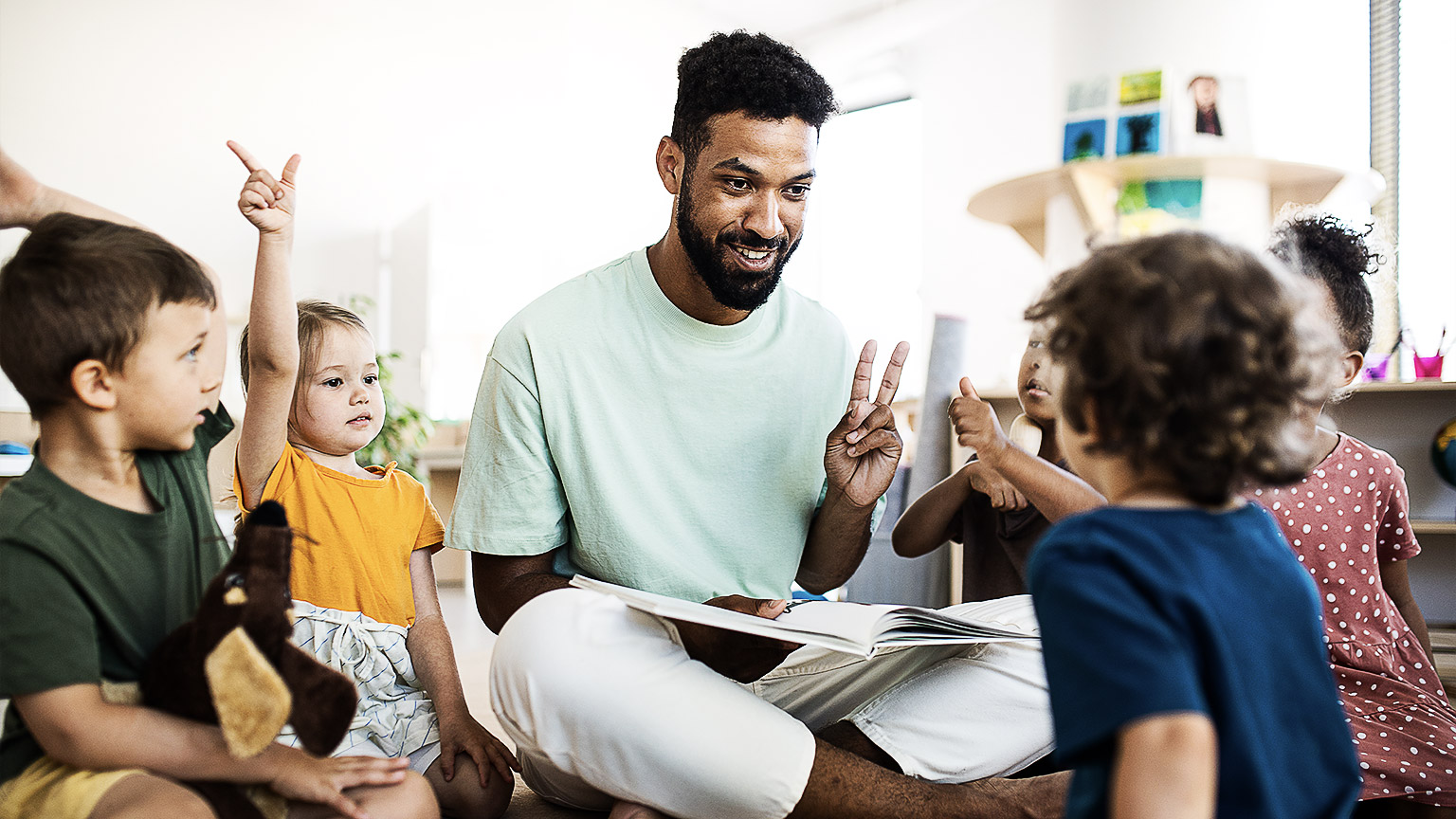Educators need to understand that there are many ways of viewing children, and each will require interpretation or analysis. Finding a streamlined way to conduct and manage analyses of children will depend on the service’s guidelines and requirements. Still, critical professional reflection is always required by the educator, who will ultimately be the planner, observer, and evaluator.
Educators are expected to reflect and analyse what they see and hear and, sometimes, what they feel instinctively, especially regarding emotional output and social connections. Many educators report there is added challenges to completing observations and interpretations that were recorded earlier on an audio-visual domain, such as a recording or video call, versus being in the actual environment.
By the end of this chapter, you will understand:
- Where to seek information about a child and when it is appropriate to share that information
- The meaningful use of the information collected (the use of information to inform on a child’s strengths, ideas, emerging skills, etc.)
- Connecting the service to philosophy, developmental milestones, theory and pedagogical and inclusion practices.

Skilled observers regularly reflect on their own personal biases. They ask themselves whether they have been conditioned to think of academic and verbal learning as the most worthwhile learning.
Manitoba Education and Advanced Learning5
Various methods can gather information on a child’s development and learning. Sources of information that can be used to inform children’s learning usually refer to two types:
- Primary sources
- Sources that provide information gathered from the direct observation of or interaction with the child/children, for example, educators or family members
- Secondary sources
- Formal assessments from external agencies or services such as welfare, allied health, maternal health, and doctors
There are different types of information that can be gathered from different sources.
The gathered information can provide valuable insights into a child’s individual children’s strengths, interests and needs. This can be analysed to reveal when additional support may be needed and the current and future development and learning opportunities that can be implemented.
Perspectives of Others
Families and Community
A primary source of information is the child and their family and community.
Under Quality Area 6 of the National Quality Standards (NQS) - Collaborative partnerships with families and communities - services must engage with others to build relationships and respect their input. Collaborative partnerships are based on interactions that value others’ knowledge, have open communication, and respect each other.
Strategies to involve others may include:
- providing opportunities for families and children to share their own stories and information exchange
- involving families in decisions about the program, activities, and curriculum to facilitate the child’s learning and development
- building social relationships to promote information exchange
- inviting feedback
- providing positively framed feedback and comments
Services are required to inform families about the program and their child’s progress in line with National Quality Standard (NQS) 1.3.3 and Regulation 75 (‘Information about educational program to be kept available’) and 76 (‘Information about educational program to be given to parents’) from the Education and Care Services National Regulations (2011).
Information families can offer to support learning and development can include:
- The child’s behaviour outside of the service
- The child’s interests outside of the service
- Any excursions, holidays or visits where particular themes came up
- Supports learning outside of the service available to the child
- Achieved or emerging developmental milestones
- Routine tasks the children can conduct themselves (self-care/self-help), such as eating, sleeping, dressing, hand washing, and toileting
- Areas of ownership and responsibility the child has at home, for example, setting the table, putting clothes in the washing basket, helping to feed pets
- Any planned and/or ongoing extracurricular activities the child engages in, such as music, sports, or art classes
- The child’s relationships with others, including parents, siblings, other relatives, neighbours, cousins, and friends
- Cultural information relevant to the family
- Any information about trauma, adverse childhood experiences or vulnerability
- Any health or developmental information, such as reports, diagnoses, disabilities, illnesses or hospitalisation, support services utilised and concerns
- General family information
- Any expected changes in the child’s daily routine or environment, such as a change of house, grandparents moving in or a pregnant mother.
* For example, some cultures have hierarchy systems that can impact learning and development. Expectations for each gender or age can differ: certain cultures value boys’ education more than girls’ and may not be as concerned about a girl struggling with her education, which can greatly hinder learning and development. Each family may also have different religious considerations and values regarding play. The languages the child is exposed to at home may also affect their performance and abilities in learning environments.
Resource
Learn more about the National regulations for education and care services (2011 SI 653)
The sharing of information and involvement of families in a service Scan the QR code to be taken to the Educator Hub on www.littlely. eduworks.com.au. Once you are logged in, find, and view the following document: Little.ly Early Learning Centre Philosophy.
Now, consider the following questions regarding the philosophy, sharing of information, and involvement of families within a service. Make sure that you keep your answers for future reference, as this information will support you in your assessment and professional practice.
The service’s beliefs regarding mutually respectful collaboration processes with families.
How could a service seek out families for contribution to the program and curriculum?
What formal and informal processes do you think the service could use to gather and share information relevant to its program and planning for the child and their family’s needs?
Children
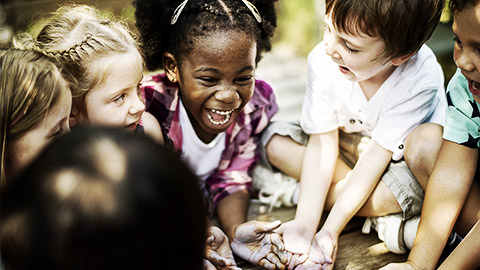
Quality Area 5 of the National Quality Standards (NQS) is about relationships with children. It focuses on educators developing responsive, warm, trusting, and respectful relationships with children. These relationships aim to build children’s well-being, self-esteem, sense of security and belonging. When a service embodies these values, a child will feel confident to explore the environment and play and learn
The service will ensure that the perspectives of the child are considered when gathering information. A child-focused service includes a child’s point-of-view when gathering information, rather than just referring to others as the expert in the child’s life. Including a child’s perspective involves inviting children to collaborate with educators to share information and be involved in co-constructing learning and play environments based on the child’s strengths, needs and interests.
Gathering information using observation of the child interacting with the environment provides insight into preferences and needs that can be used to inform programming and learning opportunities. The child can be asked about the observations and communicate their feelings and perspective on what is being observed.
Prioritising the Voice of the Child
Inviting a child to express themselves recognises that children have a right to be decision-makers in their own lives. It shares the power with the child to be a competent decision-maker and an effective communicator. Children can share information about themselves, and the educator will actively listen to their stories, preferences, emotions, and ideas. This is called giving children ‘a voice’.
Prioritising the voice of the child is demonstrated when the service gathers information from children and consults with them.
Colleagues

Fellow educators can have a wealth of knowledge and experience to share. In most cases, your colleagues will have advice to offer or be able to support and guide you to some extent in almost any situation. Colleagues may have experiences that you can use such as:
- Knowledge of the care and learning needs of a child or group with which you are unfamiliar
- Utilised the learning environment in ways you have not
- Generated solutions to support various learning outcomes
- Planning and program implementation process that you have not considered.
The educators working with the child daily will provide the most information about the child’s development, skills, expertise, and interests. They can identify any emerging developmental milestones or potential issues through incidental information and observations gathered throughout the child’s time at the service. The educators will observe the child during the various activities in the program, including at the child’s entry into the service. They will be taking note of how the child plays in different areas and behaves during different times, types, and stages of play, along with the child’s sensory preferences or dislikes, interest in indoor or outdoor play, routine and transition development and management, and interest in intentional teaching. The dynamics of the group and how the child engages various groups of children will also be monitored.
Educators can build a ‘snapshot’ of the ‘whole child’ through all the observations they make. They will look for:
- meaningful moments for the child or group
- things that intrigue or interest the child
- how the child is learning and playing
- milestone development
- cultural and social interests
- the kinds of relationships the child has with others
- various types of positive and negative behaviour
- indicators of emotional wellbeing.
A shared perspective of information is also extremely valuable to support continuity of learning and development. When you take over a group of children from another educator, the other educator can inform you what has been happening in the children’s lives until that point. This provides a helpful base of information for program and activity planning, and a greater understanding of the children as individuals, the dynamics of the group and any environmental elements that need to be considered to promote creativity and learning
One educator may observe situations that produce valuable insights while another is busy in the shared yard or covering a tea break. Without all the available insights into the children and their development, educators could fail to identify insights concerning the child, impacting their quality of care and education. You should critically reflect on the learning and development of the children at your service in collaboration with colleagues to ensure that all relevant people are properly informed on the children and to affirm or challenge service and personal practices.
External Services and Supports
External services can provide further information about the child that can support strategies to aid child health, wellbeing, and development.
External services or supports are usually secondary sources (not directly informing the educator) that act as an extension to the information provided by the family. Parents often utilise several external services and manage the network to ensure all parties work towards the same or similar goals. This network is especially helpful for the sharing of information. They might include professional services such as allied health professionals (such as a speech therapist), medical supports, and cultural groups who may be able to provide reports and assessment information to inform learning needs and preferences. Information from external stakeholders may include various types of analysis, assessment, and planned experiences specifically for the child, which will help to provide a base to start supporting the child.
Children’s Records and Files
All children who have been attending a service will have documentation that has been previously gathered. It could include orientation records, previous assessments and programming and external reports supplied on the child. There should also be information previously gathered from stakeholders, including the family and the child.
This documentation can be found in the child’s planning folder, portfolio, file, or account on an online platform. Reviewing any previous or emerging interests, skills, and developmental milestones will assist when planning for the child and understanding where they are in their development. It will also help identify any areas for further support that may be required.
Ethical Consideration of Information
As an ethical and legal requirement, all educators must ensure the confidentiality of documents informing a child or their family. This means ensuring that information is always kept in a safe and secure storage location and not directly or indirectly divulged or communicated.
The Queensland Government’s Education and Care Services National Regulations, regarding confidentiality of records kept by an approved provider, states:
The approved provider of an education and care service must ensure that information kept in a record under these Regulations is not divulged or communicated, directly or indirectly, to another person other than—
- to the extent necessary for the education and care or medical treatment of the child to whom the information relates; or
- a parent of the child to whom the information relates, except in the case of information kept in a staff record; or
- the Regulatory Authority or an authorised officer; or
- as expressly authorised, permitted or required to be given by or under any Act or law; or
- with the written consent of the person who provided the information.
Queensland Government 6
Confidentiality Policies
Services will have written policies that inform staff on how to manage the privacy and confidentiality of information gathered and held on children. Confidentiality policies set out requirements for collecting, sharing, storing and disposing child and family’s personal information.
You can review the Confidentiality policy of Little.ly in the Educator Hub
Confidentiality policies will cover:
- documentation and records are kept secure
- permission is obtained to share information with others
- the family’s details are kept private
- the purpose of the information being gathered is explained to the family
- the information gathered is used for the purpose it was collected
- educators use caution when referring to other children’s names/details /information
- a private place is available at the service so that sensitive information can be gathered and shared confidently and respectfully
- educators seek permission to share information with others, e.g., Can I let the supervisor know this?
- services respect the confidentiality of the family’s personal stories
- documentation and records are stored securely in paper form or electronically
- process or backup data containing personal information is stored on computer servers that may be located overseas, including through third-party service providers
- the service will take all reasonable steps to protect any personal information they hold from unauthorised use or disclosure.
Share Information
Part of building collaborative partnerships with others involves sharing information and documentation with families about their child and the service. Services share documentation with families about the child’s program, routines, experiences and progress. In addition, families can have access to information held about the child. This further opens opportunities for families to share information about their background, family traditions, routines, and the child’s interests from their perspective.
Sharing information needs to be planned, regular, and timely to ensure it occurs. Services must create ways to provide meaningful and easy information for families to access and contribute.
Opportunities to share information with a family could include:
- making time when families attend the service, e.g., drop off and pick up
- writing an entry in the daily communication diary
- replying to an entry from a parent in the daily communication diary
- sharing photos and comments about activities on a digital parent portal in real-time throughout the day
- calling the family to provide information and seek input
- displaying children’s work throughout the service
- creating learning stories about activities and events and displaying them in the centre or sharing them with families
- creating a notice board to provide information for families
- sending newsletters and notices to families to share information
- offer information sessions to families such as learning framework, Learning Outcomes, the Planning Cycle, observation methods and service standards and policies, procedures, and practices.
In addition, when summative assessments are completed, or evaluations are carried out, these are shared with families. Families are also invited to have input into reflection, evaluation and planning for the child to extend learning, set new learning goals and design future curriculum.

In early childhood education, documentation needs to be clear and easy to understand so it can be used as an effective way to share information with families and others about a child’s progress.
When you review your observations, it is important to remind yourself to reflect on how you documented the observation, asking yourself if you have:
- Gathered background details of the observation
- These include the date of the observation, the setting, the name of the observer and the age of the child/children involved and who they are. It may also include what happened before this moment to give context.
- Recorded play behaviours
- Focus on play behaviours that you see. Use them as a guide to understand the child’s development, interests, emerging skills, and social inclinations.
- Use positive and objective language
- Be positive and use child-focused language based on facts. Write what you see (only what actually happened), and do not include subjective opinions. When writing the observations, do not include personal assumptions, experiences, thoughts, or judgements.
- Keep the notes relevant
- Include direct quotes and information about the observation's context to fully understand the setting. Do not include information that is not applicable. Observation is a form of research where you are gathering data to form an understanding of what is occurring and to inform practice.
There are typically two main forms of research:
- Qualitative research
- This includes direct observation, interviews, or conversations. This type of research helps build a better understanding of the social and cultural context of the person/people being observed and is a descriptive form of data collection. Qualitative research allows for studying children in their own domains and natural contexts and is used to construct an understanding of how humans are shaped and why they behave in the manner they do.
- Quantitative research
- This type of research is numbers based and is usually used to find numerical averages or patterns to make predictions and generalise results for broader use.
Ethical Standards of Observations
When documenting observations, educators need to ensure that their notes are:
- Reliable
- Information provided must be accurate, consistent, and collected over a period of time. Information collected in one moment of time may not provide an accurate description of the child, their skills, knowledge, and expertise, which is why educators should complete various styles of observation on different days, at different times and in different settings.
- Valid
- Enough information should be gathered about the child and be directly related to the child’s knowledge or skills, learning, and needs and development. It is important to consider whether an observation has purpose and merit. Otherwise, you may find the records are made up of observations containing little information that can be used.
- Unbiased
- Observations need to be free of personal judgement, assumptions or stereotyping. Assuming what a child is thinking is subjective. Instead, you should simply record what they did or said, such as ‘They smiled and giggled through the whole experience and said, “This is the best ever!”’ Personal bias about anything a child is doing, the child or how you feel the child should be playing is irrelevant. Write what you see and use your professional knowledge of childhood development to support your observations.
Using Observation
Qualitative data is collected in early childhood and educational settings using various observational methods. Sometimes educators use interviews or conversations with children to gather further information, asking open-ended questions such as ‘What would you like to do?’ and ‘What do you find interesting about the beach?’
Observations, or directly gathered information from children, may take many forms according to the need. The following table details the most common observation methods for early childhood and educational settings:
Photos require a caption to express information that cannot be seen within the image. For example, what was said and what happened before and after. Educators must be mindful of what they are photographing and how many photos they take. For example, photos such as ‘selfies’ with a child would be useless. Videos and photos need to be meaningful and respect the rights and privacy of children. It is highly inappropriate to take photos of a child toileting, dressing, etc. Educators need to ensure that they are not pre-occupied with photo or video taking (as well as conducting observations) that they miss opportunities to engage with the children.
Jottings are short notes on relevant and pinpointed information from observing a child. These are written in the past tense as they are recorded after the event. Sometimes educators utilise sticky notes, clipboards or easily accessed documentation materials to complete quick jottings.
Learning stories are ‘stories’ detailing a moment in time with a beginning, middle and end. They usually include children’s quotes and actions, as well as any photographs that were taken and the educator’s reflections. They often also include the voice or collaboration of the child and/or their family. Learning stories are written in the past tense as the information is amalgamated later after the actual observation occurred. However, as they are framed as a ‘story’, they are often written in the present tense. Narratives may be written from the educator's point of view or include direct quotes from the child.
Running records can be considered time-consuming for educators, as they need to include every element observed, from which hand the child used to pick up a pencil to how long the child stayed in one area and where they went next.
Running records require a set dedicated period of time for the observer to document the child’s actions. They can help distinguish any concerns that may not be picked up through other observations. They are often used when an observer is looking for particular development, interests, behaviour or transitions. They can help make visible to the educator a more detailed picture of a child in a short period of time.
Running records are written in the present tense, as they are written at the moment of observation and usually include a timeline for ongoing observation (e.g., 9:00 a.m.–9:10 a.m.). Educators can add times to distinguish how long the child has stayed at an experience, engaged with others, engaged in solitary play, etc.
Language samples can be used when there are concerns about language development, and they predominantly capture a child’s linguistic efforts and conversations with others. The language should be documented with no alterations so that an accurate picture of the child’s language skills can be recorded.
Time and event samples are usually used to find where certain behaviours or challenges may arise. They may be used to see where a child spends their time, how long they spend there and times of challenge or engagement for the child (or group of children).
In time sampling, an observation of a child will be conducted over a set period, usually an extensive period, such as the whole morning or afternoon, or even the whole day. The samples are completed at predetermined intervals, such as every 10 mins, with one-minute records being made each time.
Event sampling is a good observation technique when trying to assess when, where and why a behaviour may occur. These, too, are observed over a period. However, the time period can be hard to determine, as it depends on how long the behaviour continues when it arises and the length of the intervals between the occurrences of the behaviour (the ‘events’).
In both time and event sampling, the records taken are only short, like a jotting, but purposefully include with whom and/or what the child is engaged. They make evident the child’s level of participation in the program, areas of strength, and challenges they may face.
Anecdotal records are one of the most common forms of documented observation. They are written in past tense and capture the most meaningful moments of a child’s day or period/moment.
There is always a lot of debate within the early childhood industry on whether portfolios are worth creating, as they are extensively time-consuming. However, they are extremely enjoyable for the family, the child, and educators to read through. They include learning stories (and sometimes other forms of observations), reflections, the child’s voice, and events that the child was involved with at the service, such as ‘Farm Day’ or ‘Crazy Hair Day’. They give a well-rounded, holistic view of the child and their experiences.
To minimise the use of paper and reduce the time it takes for educators to put a ‘scrapbook’ together, most of the observations, and even the images of artwork, are posted onto online education portals for all educators and families to access (where access is granted).
Most services that complete portfolios include a collection of the child’s artwork, which the child can take home and share at the end of the year.
This is documentation of what a child has said. It may connect to an image/photo or piece of artwork, but often it is just the meaningful commentary given by the child at a particular moment in time. It often reflects their learning, especially emerging concepts. When educators prompt children and ask relevant questions, children can express their interest and learning and what they are doing and want to do next, sharing valuable insights with the educator, who then documents what is said.
Developmental checklists analyse a child’s development at certain points of the year or as required. They separate the domains to gather a picture of where the child is developmentally and the progression they have made.
Developmental checklists include a list of milestones typically expected within the child’s age range. As checklists are completed at a particular moment in time, it is important to remember that, on that day, the child may have been excelling or been tired or struggling. These details can affect the checklist results, so they must be considered against other observations taken within similar time frames. This provides a more holistic view of the child.
A developmental summary will be an overview of the developmental evidence provided for a period. It will reflect goals and learning outcomes.
A sociogram is a visual chart that can look quite like a mind map. It displays the interpersonal relationships a child has. It provides an understanding of the child’s immediate and larger communities, supports and connections. Sociograms have been used for many years in health and family service organisations to better understand the social world of children (sociocultural, family, and ecological systems). They will often inform on the types of relationships they have. A cultural map is similar in that it describes the cultural connections of the child and their family, land and tribe/mob or communities.
Document Information Gathering

Educators will keep a record of the information gathered to maintain a clear record of the child’s file. This will provide a reference point for planning and recording the child’s progress.
According to organisational requirements, all information must be kept confidential, and files are stored securely. If others need access to this information, ensure correct procedures are followed and that information is only shared with those who are authorised to know. Educators must also follow the organisational style guide for presenting information, including using the correct template.
A record can be recorded using digital technology and media. This can include recording information in a word processing program on a computer, using devices such as shared platforms and technology such as cameras and smartphones to capture an image or record a child’s story/play time or their voice.
Analysing Data
When analysing data, consider what you want to know, what you are looking for and whether the observational material provides any evidence. Sometimes, while observing, educators can overlook a change in a child or connections between events and responses to activities. By reviewing and analysing their observations, educators may discover important information about a child that was not clear at the moment of observation, with no other data for comparison. They may find that the child has learned a new word, created a new strategy for problem-solving or gained an interest.
The analysis will utilise a range of information from various sources, including colleagues, the child's family and any other relevant stakeholders.

The NQS 1.1.1 reminds educators how the Early Years Learning Framework (EYLF) outcomes are affected by curriculum documentation and decision-making, stating:
Curriculum decision-making contributes to each child’s learning and development outcomes concerning their identity, connection with community, wellbeing, confidence as learners and effectiveness as communicators 7
- What was the setting, and how were the children typically engaging?
- What was the role of other educators and my role in the setting?
- Was the experience easily accessible and user-friendly for the children?
- Did they know how to use or engage with the experience?
- Was it age or developmentally appropriate?
- Did another educator or I need to support the experience? If so, what was the support?
- Did another educator or I provide intentional teaching moments?
- How did a colleague or I allow for child-initiated changes to the experience?
- What theories or philosophies could I use to guide and support myself to gain a better understanding of the observed moment and the child/children involved?
- Do I have prior knowledge or experience in providing for the child or group of children? How does my background and upbringing influence how I analyse the observation?
- Is the information in the observation relevant and meaningful, or have I simply recorded ramblings?
- What have I learned about my note-taking skills? Why did I make these notes?
- How can I make my teaching more effective or the environment more child friendly and inclusive?
- Does this information answer any questions I might have had about the child or the group?
- What were they interested in or engaged in?
- Who was involved, and with whom did they interact?
- What was the child/children doing?
- How did they engage with the environment?
- What learning and play preferences (dispositions for learning) did they show?
- Did they meet the outcome set for them? Did they reach an outcome from the approved learning framework during the observation? If they did, how did they do it?
- What were they trying to accomplish? How exactly did they do this?
- What strengths did they demonstrate?
- How did they overcome challenges? If they did not, why not, and what happened next?
- Are there ongoing themes that have come up previously for this child/group of children?
- What happened before and after this observation? Is it important and relevant?
- What behaviours do I see in this data?
- What can I learn about the child from this data?
- What indicators of development can I see in the data? (This can be broken down to improve the details recorded)
- In retrospect, were any moments or analysed data more significant than initially thought?
- What have I learned about the child or children over time?
The analysis does not require writing the observation again. It pulls the observation apart to find the information you need to support and understand the child. You may choose to jot down points when analysing an observation. Still, once placed into appropriate and formalised documentation, paragraphs or sentences in an analysis should typically begin with phrases that demonstrate what you now know or have analysed about the child from the information gathered.
- Recording analysis – opening lines
- ‘It is evident that…’
- ‘Through analysing the observation…’
- ‘During the process of observation…’
- ‘[Insert child’s name] has shown/demonstrated…’
After the Analysis is Complete
National Quality Standard 1.1.2 confirms the focus on what the child ‘can do’ and how to support, extend and scaffold the curriculum and learning experience based on their individual needs. Once educators have analysed an observation, they will often have ideas that can inform the cycle of planning for extending or altering support for the child based on the interests the child demonstrated, emerging skills or areas of development proved to need further practice. The initial outcome may remain the same, or a new outcome may be devised during this process. It can be helpful to write down all meaningful or relevant ideas but choose just one to pursue. (You may be able to come back and use the other ideas later if they are still relevant).
Resource
To learn about reflective practice, read the handout at the following link: Developing a Culture of Learning Through Reflective Practice from the ACECQA
Each child’s current knowledge, strengths, ideas, culture, abilities, and interests are the foundation of the program.ACECQA8
Practice
Conducting an analysis
Read the following desired learning outcome and case study, and then complete the instructions at the end:
Learning Outcome: NQS Learning Outcome 4 9: Children are confident and involved learners, and children develop dispositions for learning such as curiosity, cooperation, confidence, creativity, commitment, enthusiasm, persistence, imagination, and reflexivity.
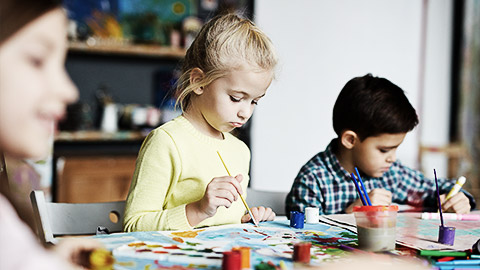
Katie
Katie, who is five years old, gathers items from the collage trolley, placing them on the table. She moves the pieces around for a moment but settles on the leaf as a central piece, placing it in the middle of her table space. She looks back to the trolley, takes out a blue piece of wood, and places it underneath the leaf. She then says to Timmy, who is standing next to her, ‘That’s better for water. He needs water to sail on.’ Timmy demonstrates curiosity about Katie’s design and watches her over her shoulder.
Katie places a large, empty acorn shell on the blue block and a small pine cone inside it, wiggling it in. ‘There,’ she says. ‘You need a head and arms!’ She gathers some sticks for arms and places them between the acorn shell and the blue wood, but they fall out. ‘Argh!’ she exhales and pushes the ends of the sticks back under the acorn shell, shoving them in harder than the first time, but they fall out again.
Timmy says to her, ‘What if you put some glue on the ends?’ Katie replies, “Yes! Good idea!” She puts a drop of glue on the ends of the sticks and places them back under the shell, and this time, they stay in place. ‘Look, it worked! Thanks!’ she says to Timmy. Timmy replies, ‘You’re welcome.’
Katie points to her creation and says, ‘He needs a face.’ Timmy replies, ‘Here, I have a black marker you can use.’ Katie answers, ‘Perfect, thanks!’ She draws a face with a smile on the object and adds more leaves and natural objects to the scene. ‘Do you want to help him sail?’ Katie asks Timmy, who replies, ‘Yes!’ Timmy sits beside Katie and gently pushes the boat around the table. Katie makes whooshing sounds and moves the leaves around the boat. She exclaims, ‘Boy, it’s windy; hold on!’ Katie and Timmy gasp, giggle and play together for the next approximately five minutes.
Complete the following activity. Make sure that you keep notes for your future reference, as this information will support you in your assessment and professional practice.
In your own work document or workspace, Create a table like this one:
| Professional reflection | Child analysis |
| Ideas for further support: | |
Populate the table by answering these questions:
- Using the previously featured questions under Analysing Data, you should ask yourself, when analysing observational data, to conduct an analysis of this observation.
- List any ideas for further support for Katie and any of her interests that could aid her development. Do not forget to reflect on her skills relating to the desired outcome.
Tip
When making observations, you can use the names of all the children involved. You may then find you can use the observation to analyse the other child or children in the future.

Educators must use their professional knowledge of childhood development and learning and development theory to support the judgements they make when conducting observations and analyses of children and for the overall running of the program. Educators need to know what they can typically expect to see children achieve at certain ages, the stages children may go through and how children are affected by certain human phenomena.
Philosophy
The philosophy of the service should be evident in the program and the learning environment, including educators’ interactions and relationships with children and their families. A service philosophy typically will outline all operational aspects such as the principles of safety, wellbeing and rights of the child, protection, inclusion, collaboration, sustainability, anti-discrimination, and cultural diversity, learning through whichever method the service adheres to, e.g., discovery and exploration. The curriculum is designed and implemented to reflect the philosophy of the service. Further, policies and practices will also compliment the service philosophy and content areas of the curriculum.
Where a service philosophy has a focus on respect and care, it will be evident in the environment. The focus will be on the development of the children within it. Individual children’s voices will be acknowledged during their engagement in the program and interactions with educators. The policies, practices, and curriculum will focus on children, including their needs and cultures, such as having accessible learning spaces and resources that cover and cater to various families, abilities and disabilities, and cultures.
Some services, for example, have philosophies embedded in educational approaches such as Montessori or Reggio Emilia, where you may see children engage in experiences and environments that promote agency and autonomy, such as exploring small world play and natural materials. The environment may be utilised as the third teacher (a source of education, wonder and guidance). Educators may create learning projects with the children instead of for them, slowly scaffolding their knowledge and skills over time in an environment of shared knowledge.
Policies
Services will have policies that support all aspects of the NQS and the childhood service regulation. For example, services will have policies in place when focusing on information gathering, curriculum planning and implementation, such as:
- children’s health and safety
- relationships with children
- collaborative partnerships with families and communities
- physical environment
- educational programs and practices.
Relationship with Children policies will include an opening statement to confirm the service’s belief on how to work with children. For example, the service recognises that positive and secure relationships with educators provide an environment where children can learn, develop, and thrive.
The Relationships with Children policy could include:
- The service upholds respectful and equitable relationships with each child.
- Responsive relationships are built with each child.
- Educators are attuned to children and spend time building relationships with them.
- Educator’s interactions with children are meaningful.
- The service maintains the uniqueness of each child and their abilities and needs.
Education programs and practice policies will provide direction about the services curriculum and the philosophies it is based on. For example, a service may indicate that it has play-based and child-centred programs to enhance each child’s learning, development, and well-being.
The Education Program and Practices policy could include:
- Activities, experiences, and curriculums are based on professional judgements for program design and delivery methods.
- Curriculum decisions are based on children’s knowledge, development, skills, strengths, ideas, culture, interests, and abilities.
- The child’s voice and their capacity to be decision-makers are acknowledged.
- Educators promote each child’s agency to make choices and decisions that influence their world.
- The service uses the Planning Cycle to make curriculum decisions.
- Critical reflection occurs to review that the curriculum is organised and designed to maximise outcomes for the child.
Collaborative relationships with families’ policies will confirm the service’s commitment to genuine collaborative relationships with families where their knowledge and insight are valued.
Collaborative Relationships with Families policy points could include:
- The service sees families and their primary partners in the care of children.
- The service respects the rights and responsibilities of families.
- Communication opportunities for families to share and be involved in decision-making are promoted.
- The service provides families with information on standards and policies, programs, child participation and community resources.
Practice - Philosophy audit
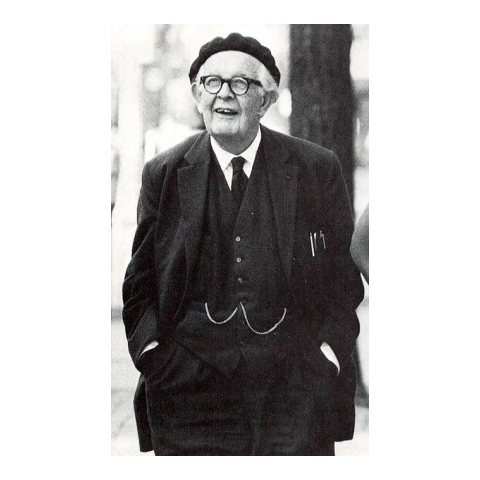
Philosophy audit
Navigate to www.littlely.eduworks.com.au and go to the Educator Hub. Once logged in, find, and view the following documents: Little.ly Early Learning Centre Philosophy.
Research Little.ly ELC philosophy or a service philosophy online and note how you would expect this to look physically and in practice or utilise your current service or placement’s philosophy and complete a mental audit (from memory) of the service.
For example, ‘At the service, we should work every day towards a sustainable future for the next generation of children: You should see measures like recycling, gardening in and harvesting food from the service’s gardens, and water minimisation strategies, such as waste-water buckets that could be used on gardens.’
Answer the following question and be sure to keep notes for your future reference, as this information will support you in your assessment and professional practice.
- Where and how do you see the philosophy embedded in the program and practices of the service?
- How could you implement further measures?
Developmental Milestones
Educators use predetermined milestones to gauge childhood progress, giving them a baseline for what children can typically do at each age. These milestones support educators when assessing children’s areas of skill and identify areas needing further support. They also acknowledge that all children develop at slightly different ages and times and have their own journeys to explore.
Resource
To learn more about developmental milestones, visit the following link.
However, this resource should be used as a general source of information rather than as a prescriptive checklist: Developmental Milestones and the Early Years Learning Frameworkand the National Quality Standards by the ACECQA
Learning and Childhood Developmental Theory
Educators use theory to guide their understanding of and approach to learning and development.
Learning and development theory, approaches and frameworks may include such areas as:
| Gesell and Piaget's theory | Changes in learning and development |
| Vygotsky and Bronfenbrenner’s theory | Sociocultural theories for understanding what impacts the child within their world |
| Skinner’s and Bandura’s theory | Theories focus on how experiences in childhood shape children’s behaviours and affect their physiology (e.g., trauma-informed care) |
| Reggio Emilia's approach and the Montessori Method | Curriculum theories that challenge thinking |
| Bowlby and Ainsworth’s attachment theory | Theories relating to attachment and relationships |
| Rogoff, Kohlberg, Vygotsky and Erikson’s theory | Theories relating to power, equity and social justice (e.g., the Aboriginal and Torres Strait Islander curriculum framework and the United Nations Convention on the Rights of the Child) |
Practice
Learning and development theories in practice
Consider ONE of the listed theories, frameworks or approaches, and search for evidence of its use within your service where you work are on placement (For those without industry experience or an allocated placement, consider what you might see hypothetically.)
Complete the following questions and actions, making sure to keep notes for your future reference, as this information will support you in your assessment and professional practice.
- Can you see the theory, framework, or approach in practice?
- If so, what evidence in the service suggests its use?
- You may be able to find images online to support your answer
Pedagogy
Educators should reflect on pedagogy that will suit the context and the children at their service using observation, analysis, and program design. According to the EYLF, educators should use and incorporate pedagogical practices that ‘reflect knowledge of diverse perspectives and contribute to children’s wellbeing and successful learning’10.
When analysing observations, educators should consider their own pedagogical practices and critically reflect on the impact the practices may have had and which ones may be more effective next time.
Inclusion and Inclusive Information Gathering Practices
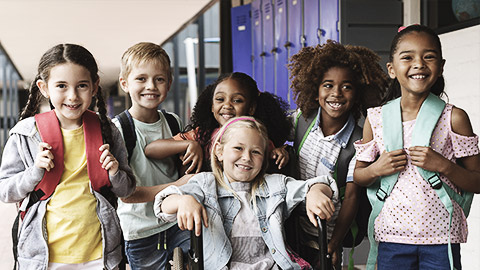
Educators should ensure all children can access learning opportunities to support their ongoing development and encourage them and their families to feel welcome and valued by treating them fairly. Educators should provide a culturally rich environment where children feel ‘at home’ and represented within their learning community, building a sense of belonging, cultural sensitivity, safety, and general well-being.
During analysis, educators need to consider whether the children felt comfortable and could relate to the experience and educators. Educators will also review how inclusive the learning environment is and how it contributed to the children’s development of skills, knowledge, and expertise. Each child’s age, culture, background, experiences, and abilities should be supported within the everyday program. This will strongly connect to the service philosophy, policies, and procedures.
Inclusive practices include involving children and their families and demonstrating respect for children. Inclusive practices aim to value individual differences and the uniqueness of each child.
This principle also underpins practices for gathering information where educators respect the right of every child to be involved and valued for their contributions to decision-making processes related to learning opportunities.
Watch the following video of toddlers at play. You may also wish to revisit ‘Developmental Milestones and the Early Years Learning Framework and the National Quality Standards’ included earlier in this section to help you understand the child in the video’s level of development.
Watch
Toddler Observation Video 3 by hatfieldmomof3.
Analyse the video and record your analysis in your own work document or workspace.
Create a table like this and ensure you keep notes for your future reference, as this information will support your assessment and professional practice.
